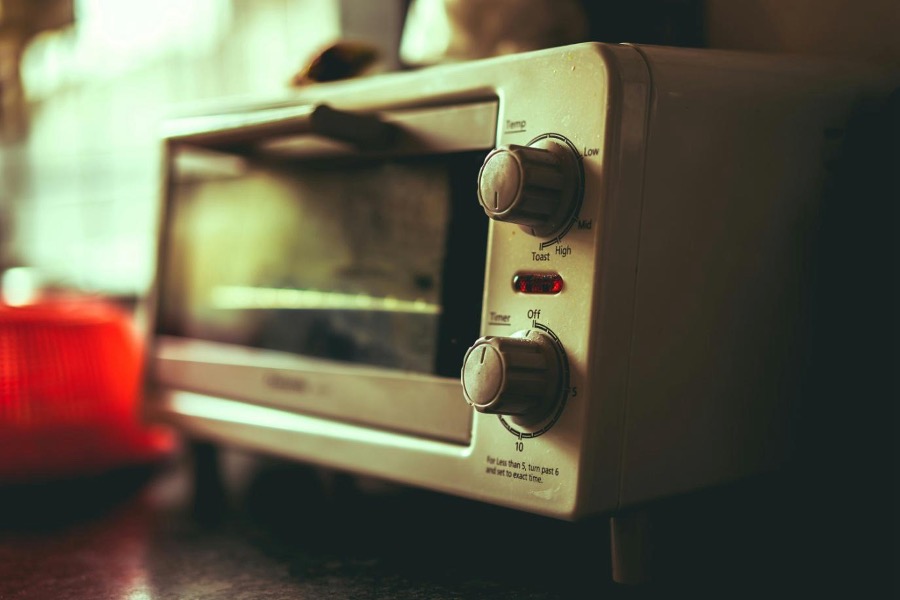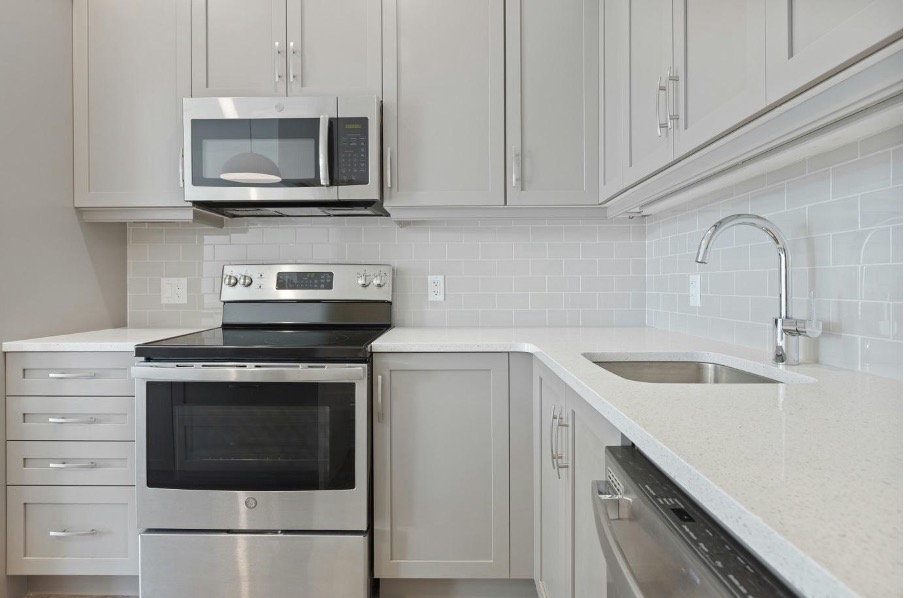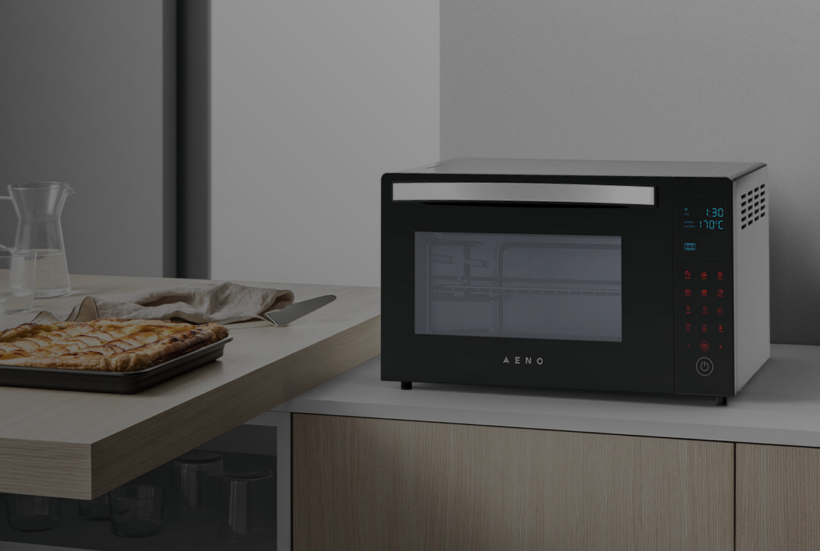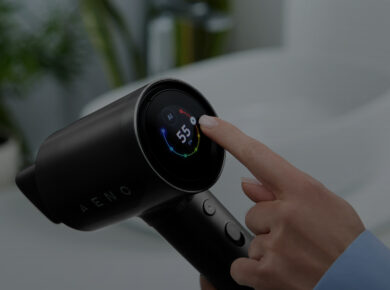Microwave ovens have long become a staple in most kitchens because of their multifunctionality, convenience, and speed. From defrosting meats to cooking vegetables, the versatile device is a boon to anyone who wants to save time on meal prep. Although microwaves are commonly regarded as a cooking shortcut tailor-made for heating leftovers and not much else, in reality, the device has far more to offer than first meets the eye.
There are many things to consider when choosing a microwave oven. In this extensive microwave buying guide, we’ll discuss all the ins and outs of this essential device, review its main types, pinpoint the principal differences, and take a better look at the key features you need to pay attention to when browsing for your microwave.

What Are Different Types of Microwaves?
With so many configurations, features, and price tags on the market, choosing the right microwave may seem challenging. After all, you need to account for multiple factors and ensure that the device will fit your kitchen perfectly. Microwaves are typically divided into two main categories: based on their function and based on their placement within the kitchen. Based on the function, there are three main microwave oven types:
- Solo microwave oven is an entry-level appliance suitable for defrosting, heating, and basic cooking; you can’t bake or roast in it.
- Grill microwave oven combines the functions of the previous device with the powers of grilling.
- Convection microwave oven is an upgrade from the previous two appliances: it has more cooking functions, like baking, roasting, and grilling, but comes with a heftier price tag.
Basic differences aside, let’s delve deeper into the different types of microwaves based on their placement within the kitchen.

1. Countertop Microwaves
Probably the first model that comes to mind when speaking about microwaves is the countertop variety. The appliance sits on the kitchen counter as a separate entity, which can be a perk and a disadvantage: freestanding models are easy to relocate and quick to set up, but they also tend to hoard your counter space, which can be a tangible drawback if you have a smallish kitchen in the first place.
Countertop microwaves typically come with a lower price tag and a wide range of sizes, features, and capacities; that’s why you can find anything — from heftier models that can handle large dishes to smaller appliances suitable for limited countertop space. They’re often ADA-compliant, meaning the device is easy to operate with one hand without requiring a tighter grasp or wrist twisting, which can be a boon for people with disabilities.
Pros:
- Boasts a wide range of models, capacities, and features.
- Easy to relocate and set up.
- Lower price tag.
Cons:
- Hoards the countertop space, which is especially noticeable in smaller kitchens.

2. Over-the-range Microwave
Over-the-range microwaves are microwave-hood combinations installed in the cabinet over the range. These models are perfect for a smaller kitchen, as they don’t hoard the countertops and create one centralized workspace.
OTR microwaves often play a triple duty: they free your countertop space and feature task lighting and a vent, helping filter odor and smoke from the air. Over-the-range microwaves typically include two types of filters: charcoal filters remove odors, while grease filters clean air. If you want them to do the job properly, replace and clean them regularly. While grease filters are simple to clean with hot, soapy waters, the charcoal filters should be typically replaced every six months.
Pros:
- Free up counter space and keep your cooking in one centralized location.
- It doubles as a venting system and features task lightning all in one device.
Cons:
- Although OTP microwaves filter the odors, they essentially recirculate the air inside your kitchen rather than venting it outside.
3. Built-in Microwaves
Installed directly into dedicated cabinets — typically below a countertop or above a wall oven — built-in microwaves contribute to sleek and sophisticated kitchen design. In addition to space optimization, integrated microwaves are highly customizable and come with a wide range of capacities and functions. For ease of access, the door opens from the top, not from the side, like with a regular microwave.
Pros:
- Enhance aesthetics and streamline your cooking experience.
- Free up your kitchen space.
Cons:
- Require exact measurements to fit the designated cabinet.
- If you mount them higher up in your kitchen, they can be a bit harder to clean.
4. Microwave Oven Combos
A wall oven and microwave combination is a type of microwave that streamlines your cooking experience and uses the limited kitchen space to the maximum. How does it work? The appliance merges a built-in microwave and wall oven in a single unit, which is installed simultaneously and provides functionality of both. Typically installed at eye level, combinations free up the kitchen space, provide consistent designs, and have numerous advanced features, like sensor cooking technology, pre-programmed recipes, and remote control via app.
Pros:
- The integrated appliance provides the functionality of an oven and a microwave.
- Models come with polished and sleek designs and advanced cooking technology and functions.
Cons:
- Higher price tag compared to countertop microwaves.
- A number of cooking features can be overwhelming for beginner-level users.
With the main types of microwave oven in mind, let’s move forward to the key features to consider before finalizing your choice.

How to Choose a Microwave: Main Factors to Consider
In this day and age, the microwave experience goes beyond pressing the button and waiting for a ping. If you’re more or less sure about the type of microwave that will suit your kitchen best, it’s time to focus on the appliance’s main features and functions.
1. Capacity
When buying a microwave, you need to consider the external measures of the appliance, like height, width, depth, and door clearance (and whether you’ll be able to fit it into a designated drawer or on a countertop), and the internal measures, also called capacity. The latter determines how much food you can cook in a single session and generally varies from 17L to 30L. Here’s an approximate capacity recommended for:
- Smaller-sized families (2–4 members): 15L–20L;
- Average-sized families (5–6 members): 25L–30L;
- Big families (over 6 members): above 30L.
If you’re a member of a large family, you should also consider the interior height (should be over 20 cm) and the size of the turntable (around 30 cm), as both parameters allow for cooking larger portions in one go.
2. Power
Wattage is the power of a microwave; the higher the wattage, the faster the cooking time. The microwave ovens exist in a power spectrum, with less powerful models promising around 600 watts and their most powerful counterparts boasting 1,700 and above.
Do you need a super-powerful microwave? If you have a big family and plan to cook big meals or complex recipes, you will need over 1,000 watts. As a general rule, the 1,000-watt appliance is perfectly suitable for defrosting, reheating, and cooking the majority of the recipes. In the end, everything depends on the size of the meals, the number of family members, and the cooking habits.
3. Turntable vs. Flatbed
Both turntable and flatbed models look the same from the outside. But open the door, and you’ll immediately find the difference, as flatbed microwaves don’t have turntables rotating your food. Which one should you choose?
- Turntable microwaves have a glass tray attached to a plastic support ring. When the microwave starts cooking, the turntable rotates to ensure the food cooks evenly. Cleaning turntable microwaves is pretty simple, as the glass tray is removable.
- Flatbed microwaves rely on a different technology to ensure that food cooks evenly. Underneath the base of flatbed models, there is a rotating microwave antenna that makes the appliances turntable-free. Flatbeds boast several advantages, like extra cooking space and ease of maintenance, as there is no removable glass tray. Drawbacks-wise, expect to pay a heftier price.
4. Clearance Space
Whether installing a countertop or built-in microwave, account for clearance space to prevent overheating and allow sufficient ventilation. Although the general recommendation is around 15 cm of clearance space above and behind the appliance, a lot depends on your model. For instance, you shouldn’t place any small appliances, cookbooks, or other items on top of microwaves that have vents on top.
5. Heating Categories
When cooking or reheating meals, many microwaves feature a symbol that indicates the appliance’s heating category. They are rated from A to E, with A being the least powerful and E — the most.
6. Racks
Some models come with additional accessories, like metal racks, which can come in handy if you want to cook multiple dishes at the same time. Of course, everything depends on the model’s capacity, so ensure that the height is sufficient for you to fit in multiple dishes.

Why You Should Buy a Microwave Oven: Unhealthy Snack Hack or Must-Have Appliance?
In the previous sections, we have covered how to choose the microwave oven and which main factors you should pay attention to when browsing for one. If you’re still unsure whether you need the appliance in the first place, let’s take a quick look at the main advantages and drawbacks of this amazing product.
1. It Allows You to Save Time
With the busy everyday lifestyle, faster equals better, and microwaves are a type of appliance that knows how to deliver. Reheat leftovers, defrost meats, and cook simple meals in a matter of minutes with minimum effort on your behalf. It’s a win-win, no matter how you look at it.
2. It’s Healthier Than Other Cooking Methods
A common misconception that microwaves kill the vitamins and nutrients in your meals is still alive and kicking. In fact, the opposite is true, as microwaves do a better job of preserving multiple nutrients and vitamins, like C or B, which can be lost through other cooking methods. Why is that the case? Microwaves cook the food relatively quickly at lower temperatures, meaning nutrients and vitamins are exposed to less heat, which results in higher nutrient retention.
3. It’s Multifunctional
Upper-echelon microwaves combine the powers of grilling, convention, roasting, and baking in a single device, while their lower-priced counterpart allows for reheating, defrosting, and cooking in a matter of minutes. The bottom line is that microwaves substitute for many other appliances, saving money and countertop space.
Conclusion
Microwave ovens are easy-to-use and versatile appliances and a handy addition to any kitchen. Although selecting a perfect microwave will take some time, accounting for all factors, like your kitchen space, wattage needs, and optimal capacity, will allow you to choose a perfect appliance that will complement your kitchen and cooking style.
Want to BUY this product?
Check out retailer list for your country.








